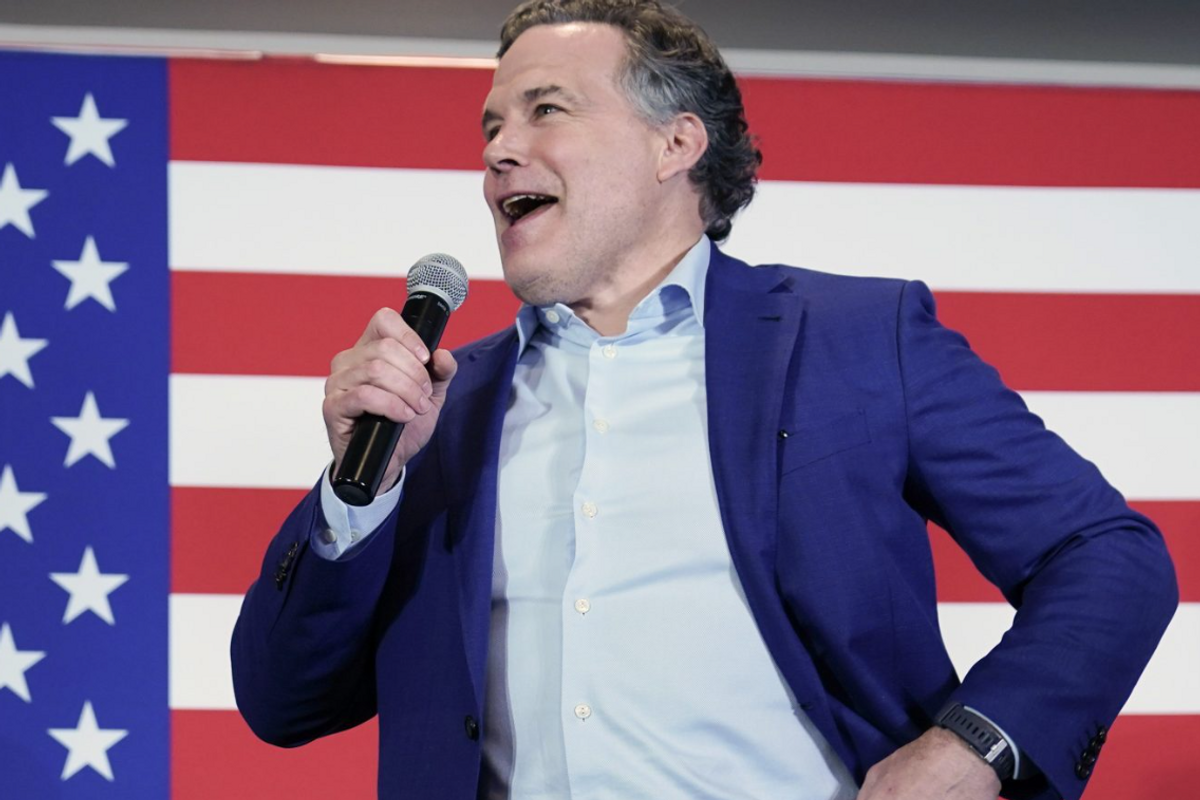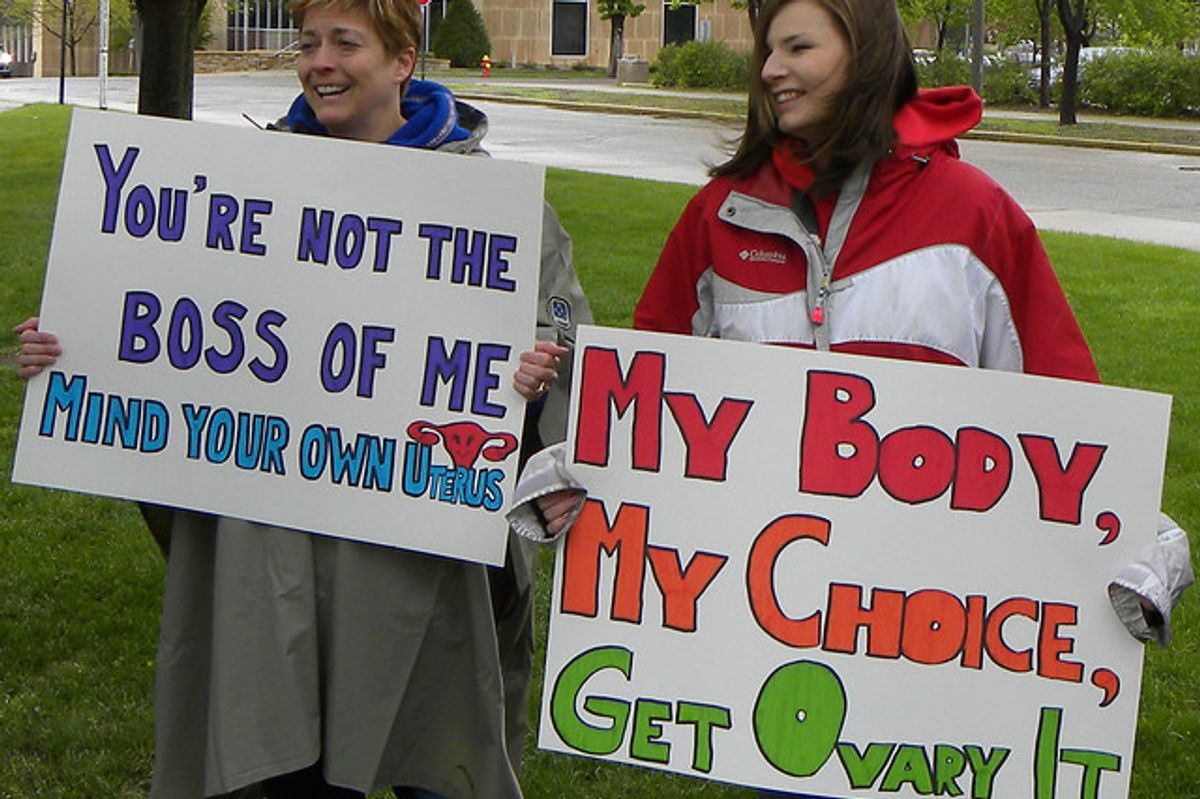
Reprinted with permission from AlterNet.
On November 8, if America doesn’t make history by electing its first former beauty-pageant owner and reality-show star as president, it will do so by electing the first woman to occupy the Oval Office. A woman in a suit; a suit that has pants.
Much is made of Hillary Clinton’s sartorial choice of the matching jacket and slacks as her signature look. But whether the subject of celebration or mockery, the response stems from the same fact—that a woman in public life who shucks nylons and pumps in favor of the freedom of movement long afforded men, well, that’s a woman who is claiming power.
Some might claim that the pantsuit is merely a symbol of feminism, one that can belie the motives of the woman who wears it. Symbol though it be, there is nothing “mere” about it: the pantsuit, as worn by the first presidential nominee of a major U.S. political party, is feminism itself. Its existence as an acceptable form of female dress in the halls of power is the result of thousands of years of feminism, and in Western culture, particularly the last few hundred.
The battle to unbind women from corsets and crinolines and bustles and busks was the work of feminists. It’s hardly a coincidence that the doffing of the corset in the 1920s, together with the adoption of a shorter dress that hung loosely on the frame, coincided with the time women gained the right to vote. But pants were another thing entirely. Pants were—and often still are—symbolic of something other than comfort or even ease of movement. Pants are a symbol of power and self-possession. Pants encase and protect the genitals while skirts offer access. A woman in pants is claiming her body as her own, treading her own path in the world.
Feminists in the 19th century sometimes stepped out in pants, often in the context of bicycling (itself a controversial activity for women). Even in those circumstances, the sight of a woman in pants stirred outrage and fear. A photographic illustration from 1897 bears the caption, “The New Woman—Wash Day,” and shows a man in an apron hunched over a laundry basin while a woman wearing pants stands over him, jauntily smoking a cigarette. It would be another 24 years before American women won the right to vote, and another 72 years before a woman serving in the United States Senate would be permitted to wear pants while delivering a floor speech.
As late as 1938, a woman was arrested in Los Angeles for wearing pants in a courtroom, and was jailed for five days. The movie star Katharine Hepburn was frowned upon by Hollywood for wearing blue jeans to the set. In 1969, I was sent home from public school for wearing pants to class. The walk to school was long, the winter was cold and skirts were short. Had I worn a floor-length skirt, I would have been deemed weird, but not in violation of the dress code. But the sight of pants on the female form, it seemed, was transgressively distracting. It earned me my junior-high nickname, “Stan the man.”
In 1993, only months after Hillary Rodham Clinton became first lady, Carol Moseley-Braun of Illinois, the first African-American woman to win a seat in the U.S. Senate, joined Sen. Barbara Mikulski of Maryland in wearing pants on the Senate floor, prompting the sergeant-at-arms to change the archaic rule prohibiting women senators so clad from standing at their desks in the upper chamber.
* * *
As first lady, Hillary Clinton wore her share of skirts, and was hardly the first in that ceremonial role to wear pants from time to time. It wasn’t until she launched her own bid for a U.S. Senate seat, however, that the pantsuit became her everyday look.
It was in 2000, as Bill Clinton was finishing his second term as president, that the first lady threw her hat in the ring of electoral politics to vie for the seat being vacated by Sen. Daniel Patrick Moynihan of New York, who was retiring. I was the Washington correspondent for the now-defunct Working Woman magazine, and managed to arrange a White House interview with the candidate.
I wore my best suit, a blue, brushed-silk number consisting of a matching jacket and skirt. With my limited resources as a freelance reporter, I wouldn’t have considered sinking real money into a suit of the sort that featured trousers. In conservative Washington, I didn’t want to risk having my best suit be one that might be frowned upon in some of the spaces my reporting took me to.
I was ushered into the Treaty Room, where I was greeted by Hillary Clinton, coiffed in an elegant but unfussy manner. She wore a brown suit with pants, a pink knit shell and a short, simple necklace of chunky beads. She looked great. And subtly transgressive. For the genius of a woman’s pantsuit is not only the power and self-agency conveyed by the pants; it’s that power combined with the elements of sartorial self-expression traditionally reserved for the female sex—choices of color, proportion, jewelry and other accessories. She’s clearly a woman—and she’s wearing THE PANTS.
This is why no amount of mockery by those who deem themselves arbiters of fashion—at least when It comes to the clothing choices of the first woman nominee of a national party, of heaven forfend, the first woman president of the United States—can dissuade supporters of Hillary Clinton from embracing the pantsuit. There were fundraisers called “The Night of 1,000 Pantsuits,” and a flash mob of dancers that poured into New York City’s Union Square on October 2.
In our interview, I asked Clinton how she endured the constant scrutiny and criticism, which seemed as much about the changing role of women in society as about her as a person. She paused for a minute, and said:
“You know, I stopped thinking about it very much because I want to live my own life the best way I can. And if I think too much about how other people may be perceiving it, that becomes burdensome. … I want to be as grounded, as centered as I can be, in who I am and what I believe and what I want to help make happen for people.
“I can’t really worry too much about what any one person or any group of people may see in me. I can only keep doing the best I can, and if that provides support or it provides some example to others—not about the way I’m living my life, but about the way I’m trying to make choices that are right for me—then I will be very happy about that.”
On Election Day 2016, many women will choose their attire with intention. Though the white pantsuit is yet to be considered a fashion-forward ensemble, it will be soon enough. Hillary Clinton is poised to ascend to the presidency, and those men made queasy by the notion of a woman in the nation’s top job may take comfort in the fact that, just like they do, she puts her trousers on one leg at a time.
https://youtu.be/GxHT4kFG14M
IMAGE: U.S. Democratic presidential candidate Hillary Clinton reacts before boarding her campaign plane at Miami international airport in Miami, Florida, U.S., October 26, 2016. REUTERS/Carlos Barria/File Photo


